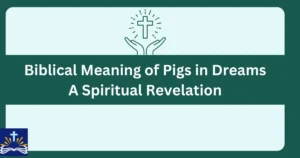Solar eclipses have fascinated humanity for centuries, often carrying deep spiritual and biblical meanings that go beyond science. These celestial events have been seen as signs, messages, and moments of reflection. In biblical history, eclipses were often associated with divine intervention, prophecy, and significant changes. Many believe they symbolize renewal, warnings, or spiritual awakenings. Whether viewed as a reminder of the universe’s grand design or a call to seek deeper faith, solar eclipses hold a special place in spiritual traditions.
If you’ve ever wondered what a solar eclipse truly represents beyond astronomy, you’re in the right place! This article explores the spiritual and biblical interpretations of solar eclipses, uncovering their significance in faith and personal growth. Keep reading to discover how these rare events may carry deeper messages for your life and spirituality.
Solar Eclipses in Ancient Times
Solar eclipses have fascinated civilizations for centuries, often regarded as omens or messages from the divine. Many cultures saw these celestial events as signs of change, with kings and religious leaders interpreting them as warnings or blessings.
In ancient times, people created myths to explain eclipses, often linking them to battles between good and evil. Some societies performed rituals to ward off perceived dangers, while others saw them as opportunities for spiritual renewal.
- Ancient Chinese believed a dragon was devouring the Sun during an eclipse.
- The Greeks saw eclipses as warnings from the gods, influencing political decisions.
- Mayan and Aztec civilizations associated them with divine anger and performed sacrifices.
- Mesopotamians recorded eclipses as omens predicting the fate of rulers.
- Norse mythology described eclipses as wolves chasing the Sun and Moon, signaling the end of the world.
Even today, solar eclipses are seen as moments of significance, inspiring reflection and curiosity. While modern science explains the mechanics behind eclipses, their impact on spiritual and cultural traditions remains strong. These celestial events continue to spark discussions about cosmic order, divine messages, and human transformation.
Historical Significance in Different Cultures
Throughout history, solar eclipses have been viewed with awe, fear, and reverence by different civilizations. Many ancient cultures saw them as supernatural events, believing they signaled divine messages, warnings, or significant shifts in power.
From the Mayans to the Chinese, eclipses were often interpreted as omens of change, sometimes linked to the fate of rulers and empires. These celestial events influenced traditions, rituals, and even decision-making in societies across the world.
- The ancient Chinese believed a dragon was devouring the Sun during an eclipse.
- In Norse mythology, wolves were thought to chase and momentarily catch the Sun.
- The Mayans carefully recorded eclipses, associating them with cosmic cycles.
- Some Native American teams viewed eclipses as a time of renewal and introspection.
- Many medieval European societies considered eclipses as divine warnings or signs of disaster.
Despite cultural differences, solar eclipses have always fascinated humanity. They were often used as markers of time, aligning religious and astrological calendars and shaping the beliefs of entire civilizations.
Interpretations Across Different Regions
While some cultures feared solar eclipses, others saw them as part of a natural order, offering insight into the universe’s mysteries. Interpretations varied based on regional traditions, religious beliefs, and societal structures.
In Asia, many saw eclipses as battles between celestial forces, while African traditions often linked them to stories of renewal and cosmic balance. In contrast, European interpretations leaned towards caution, often associating eclipses with significant historical events.
- Indian traditions emphasized the need for purification during eclipses.
- Some African teams saw eclipses as celestial reconciliations rather than omens.
- South American civilizations used eclipses in their astrological and agricultural calendars.
- The Greeks, influenced by science, began studying eclipses to understand their patterns.
- Many Middle Eastern cultures recorded eclipses as significant historical and religious events.
Though modern science explains eclipses, their cultural interpretations continue to influence spiritual beliefs and astrological practices today.
Eclipses as Harbingers of Change
For centuries, eclipses have been associated with transformation, marking shifts in leadership, societal changes, or personal awakenings. Many rulers and leaders feared eclipses, believing they signified the rise or fall of kingdoms.
Even today, some people see eclipses as moments of spiritual awakening or cosmic alignment, signaling the need for inner reflection, new beginnings, or letting go of the past.
- Eclipses have historically been linked to the deaths and births of rulers.
- Some astrologers believe they mark major global events or personal transformations.
- Many traditions associate them with endings, beginnings, and the flow of time.
- Some religions see them as divine warnings or calls for repentance.
- They encourage people to pause, reflect, and embrace new opportunities.
Whether feared or embraced, eclipses remind humanity of the ever-changing nature of life. They symbolize cycles of renewal and serve as celestial markers of transformation across cultures and time periods.
Biblical References to Solar Eclipses
The Bible mentions celestial events, including eclipses, as signs of divine intervention. Many biblical passages describe the Sun darkening, often in connection with prophetic or significant events. These references have led some to interpret solar eclipses as messages from God.
In scripture, darkness covering the land is seen as a symbol of spiritual trials or divine warnings. Some scholars believe that certain recorded eclipses align with biblical prophecies, reinforcing the idea that they hold deeper meaning.
- Amos 8:9 describes a day when the Sun will go dark at noon as a sign of judgment.
- Joel 2:31 mentions the Sun turning to darkness before the great day of the Lord.
- Matthew 27:45 records darkness covering the land during Jesus’ crucifixion.
- Biblical scholars often debate whether these passages refer to literal eclipses or symbolic events.
- Some view eclipses as reminders of God’s power and the temporary nature of worldly struggles.
For believers, eclipses serve as opportunities to reflect on faith and divine purpose. While some see them as warnings, others view them as moments to strengthen their spiritual connection and seek wisdom.
Eclipses in Scripture
Throughout the Bible, celestial events such as eclipses are often associated with divine messages, warnings, and significant moments in history. They symbolize God’s power, serve as signs of change, and sometimes foretell important events.
Many biblical passages reference darkness covering the Earth, which some scholars interpret as descriptions of solar eclipses. These moments are often linked to judgment, transformation, or divine intervention in human affairs.
- In Amos 8:9, God declares that He will darken the Earth in broad daylight.
- Joel 2:31 speaks of the Sun turning into darkness before the great day of the Lord.
- The crucifixion of Jesus was marked by an unexplained period of darkness (Luke 23:44-45).
- Some scholars suggest that eclipses were used as divine warnings in biblical prophecy.
- Eclipses often symbolize shifts in spiritual or earthly realms in biblical contexts.
The presence of darkness in Scripture is often a call to reflection, repentance, and awareness of divine timing. Many believers see eclipses as reminders of God’s power over the universe.
Interpretations by Biblical Scholars
Biblical scholars have long debated the significance of solar eclipses in Scripture. Some view them as natural events that align with divine plans, while others believe they are symbolic warnings or messages from God.
Many theologians interpret biblical eclipse references as metaphors for spiritual awakenings or significant prophetic events. Some connect them to end-times prophecy, while others see them as reminders of humanity’s dependence on divine light.
- Some scholars believe biblical references to darkness align with historical eclipses.
- Others view eclipses as metaphors for spiritual darkness and renewal.
- Theologians debate whether biblical eclipses were literal or symbolic.
- Some associate eclipses with prophetic warnings about judgment and repentance.
- They are sometimes linked to celestial signs preceding the Second Coming.
While interpretations vary, the idea that celestial events hold spiritual meaning remains strong in theological discussions, shaping perspectives on faith and prophecy.
Symbolism of Darkness and Light
The Bible often contrasts darkness and light to represent spiritual truths. Light symbolizes God’s presence, truth, and guidance, while darkness is associated with judgment, ignorance, or separation from God.
Eclipses, where light is momentarily covered by darkness, can be seen as powerful metaphors for trials, transformation, or the temporary obscuring of divine clarity. Many believe they symbolize the struggle between good and evil, urging believers to seek God’s light.
- Light represents God’s truth and divine wisdom in Scripture.
- Darkness often symbolizes trials, sin, or separation from God.
- Eclipses can symbolize a temporary period of testing or change.
- Many see them as reminders to trust in God’s guidance even in dark times.
- They encourage believers to seek spiritual awakening and renewed faith.
Whether seen as warnings, signs, or metaphors, the interplay of darkness and light in an eclipse serves as a reminder of divine presence and the continuous cycle of spiritual growth.
Spiritual Lessons from Solar Eclipses
Eclipses symbolize the balance between darkness and light, reminding us that challenges are temporary. Just as the Sun reemerges, difficulties in life eventually pass, offering new beginnings. Many cultures and spiritual traditions use eclipses as moments for meditation and renewal.
The interplay of light and darkness in an eclipse can also represent personal transformation. It serves as a metaphor for overcoming obstacles, embracing change, and finding clarity after periods of uncertainty.
- Darkness in an eclipse can symbolize trials, while the returning Sun represents hope.
- Many believe eclipses mark turning points in personal and global consciousness.
- Some traditions encourage prayer and reflection during eclipses.
- Spiritual seekers use this time to release negativity and embrace renewal.
- The event reminds us of the cosmic order and divine presence in our lives.
Eclipses offer a unique opportunity to pause and realign with our purpose. Whether seen through a scientific or spiritual lens, they inspire wonder and a deeper connection to the universe.
Biblical Meaning of Dreaming of a Deceased Mother
Metaphysical Significance
Solar eclipses have long been considered powerful metaphysical events, symbolizing shifts in consciousness, energy, and spiritual awareness. Many spiritual traditions believe eclipses create a bridge between the physical and spiritual realms, allowing for deep introspection and transformation.
The temporary covering of the Sun by the Moon represents the cyclical nature of life—moments of darkness followed by renewal. In metaphysical thought, eclipses are seen as opportunities for cleansing, letting go of past burdens, and embracing a higher state of awareness.
- Eclipses are thought to amplify spiritual energy, making them ideal for meditation and self-reflection.
- Many believe they reveal hidden truths, both personally and collectively.
- Some traditions see eclipses as a reset, allowing for new beginnings.
- They can heighten intuition and inner awareness.
- The alignment of celestial bodies represents balance and interconnectedness in the universe.
For those who embrace metaphysical teachings, eclipses serve as cosmic reminders of life’s continuous cycles of change, urging individuals to align with their true purpose.
Spiritual Warnings or Promises?
Different religious and spiritual traditions view solar eclipses as either warnings of impending challenges or promises of transformation. In biblical and prophetic contexts, they are sometimes seen as omens signaling significant events, while others interpret them as reassurances of divine presence.
Whether viewed as warnings or blessings, eclipses encourage spiritual awareness. Some believe they serve as wake-up calls, urging individuals to reevaluate their paths, while others see them as divine signs of protection and guidance.
- Some traditions warn that eclipses foreshadow global or personal upheaval.
- Others interpret them as signals of spiritual breakthroughs and growth.
- They may serve as reminders to align with higher values and purpose.
- Prophetic interpretations often link eclipses to biblical end-time signs.
- Many spiritual seekers view them as moments of divine reassurance.
Ultimately, whether an eclipse is seen as a warning or a promise depends on one’s perspective. It can be a call to prepare for change, but also a reminder that darkness is always followed by light.
Connection to Personal Transformation
Eclipses are often associated with profound personal transformation, symbolizing endings, new beginnings, and shifts in awareness. Just as the Sun is temporarily obscured, individuals may experience moments of uncertainty before gaining clarity and renewal.
Spiritually, eclipses invite introspection and growth. They provide an opportunity to release what no longer serves, embrace inner healing, and step into a new phase of life. Many believe they mark pivotal moments in personal and spiritual development.
- Eclipses encourage letting go of old habits, fears, or limiting beliefs.
- They symbolize the transition from darkness to enlightenment.
- Many experience heightened intuition and inner clarity during an eclipse.
- They inspire personal and spiritual rebirth, much like the Sun’s reappearance.
- Eclipse seasons are often seen as times of great personal evolution.
For those on a spiritual path, eclipses serve as reminders that transformation is a natural part of life. They encourage embracing change with faith, trusting that even in darkness, growth and renewal are always possible.
April 8, 2024 Solar Eclipse: What to Expect
The upcoming solar eclipse on April 8, 2024, will be one of the most significant celestial events of the decade. It will be a total solar eclipse, where the Moon completely blocks the Sun, casting a shadow over parts of North America.
This event holds both scientific and spiritual significance. Astronomers anticipate valuable observations, while spiritual communities view it as a moment for reflection and renewal. Many will gather to witness the event, finding meaning in its rare beauty.
- The eclipse will be visible in the U.S., Canada, and Mexico.
- Cities in the path of totality will experience darkness for several minutes.
- Scientists will study the Sun’s corona during this rare opportunity.
- Spiritual traditions encourage meditation and personal reflection.
- Many believe the eclipse symbolizes transformation and global shifts.
Whether viewed as a natural phenomenon or a cosmic sign, this eclipse is a reminder of the universe’s vastness. It encourages both scientific curiosity and spiritual contemplation, making it a truly remarkable event.
Astronomical Details
A solar eclipse occurs when the Moon passes between the Earth and the Sun, temporarily blocking sunlight. The April 8, 2024, eclipse will be a total solar eclipse, meaning the Moon will completely cover the Sun for a few minutes, creating a breathtaking celestial event.
This eclipse will follow a path of totality across North America, allowing millions to witness the rare alignment. Scientists use eclipses to study the Sun’s corona, the outer atmosphere, which is usually hidden by the Sun’s brightness.
- The eclipse will last for several minutes in the path of totality.
- It will be visible across parts of the U.S., Canada, and Mexico.
- Observers outside the totality zone will see a partial eclipse.
- NASA and other agencies will conduct studies during the event.
- Proper eye protection is essential to safely view the eclipse.
Eclipses have fascinated humans for centuries, inspiring both scientific curiosity and spiritual reflection. This event offers a rare opportunity to witness the universe’s intricate design in motion.
Spiritual Significance in the Modern Context
In many spiritual traditions, solar eclipses are seen as powerful symbols of transformation and awakening. They are believed to mark shifts in energy, inviting deep reflection and renewal.
For many, eclipses are times of heightened awareness, where personal growth and inner change are emphasized. Some believe they bring moments of divine intervention, encouraging people to realign with their spiritual paths.
- Eclipses symbolize the balance between light and darkness in life.
- They are seen as moments of renewal and personal transformation.
- Many use this time for prayer, meditation, and inner reflection.
- Some believe eclipses signify the closing of one chapter and the beginning of another.
- The alignment of celestial bodies is often viewed as a sign of divine order.
Whether viewed scientifically or spiritually, eclipses remind us of the vastness of the universe and our place within it. They invite us to pause, reflect, and embrace change.
Cultural Relevance
Throughout history, different cultures have assigned deep meaning to solar eclipses, often viewing them as powerful omens or messages from the divine. Ancient civilizations recorded eclipses as warnings, while others saw them as cosmic resets.
Even today, solar eclipses hold cultural significance, with many people gathering for ceremonies, spiritual practices, and scientific exploration. The 2024 eclipse will likely inspire global interest, drawing both astronomers and spiritual seekers alike.
- In ancient times, eclipses were often seen as messages from the gods.
- Some cultures viewed them as signs of change, war, or renewal.
- Indigenous traditions often include eclipse ceremonies and rituals.
- Modern society embraces eclipses as moments of wonder and unity.
- Media and scientific communities promote awareness and education about eclipses.
The 2024 eclipse is not just an astronomical event but also a cultural and spiritual moment, reminding humanity of the deep connection between the cosmos and our existence.
How to Safely View the Solar Eclipse
Watching a solar eclipse is an awe-inspiring experience, but it requires proper precautions. Looking directly at the Sun can cause serious eye damage, so protective measures must be taken. Special eclipse glasses and indirect viewing methods ensure a safe and enjoyable experience.
In addition to eye safety, choosing a good location is key. Many people travel to areas within the path of totality to experience the full effect. Planning ahead allows for a clearer view and a more memorable moment.
- Use certified eclipse glasses to protect your vision.
- Avoid looking at the Sun through regular sunglasses or camera lenses without filters.
- Pinhole projectors offer a safe way to view the eclipse indirectly.
- Check weather conditions and find an open space for the best view.
- Live streams provide an alternative for those unable to see it in person.
By taking the right precautions, everyone can safely witness this celestial event. Whether watching in person or online, the solar eclipse promises to be an unforgettable spectacle that connects people across cultures and beliefs.
Where to See the Solar Eclipse of 2024
The total solar eclipse of April 8, 2024, will be a spectacular event visible across parts of North America. Those within the path of totality will witness the Moon completely covering the Sun, turning day into night for a few minutes. This rare celestial event will attract millions of skywatchers.
To experience the full eclipse, viewers must be in the direct path of totality. Those outside this path will only see a partial eclipse, where a portion of the Sun remains visible. Choosing the right location can enhance the viewing experience significantly.
- The eclipse will pass through Mexico, the United States, and Canada.
- Cities in the path of totality will experience complete darkness for a few minutes.
- Weather conditions play a crucial role in visibility.
- Some areas may have higher crowds due to interest in the event.
- Proper planning ensures the best viewing experience.
Understanding where the eclipse will be most visible allows people to prepare, whether they are traveling to a prime location or observing from their own backyard.
Locations of Totality
The path of totality will begin in the Pacific Ocean, first reaching land in Mexico before traveling across the U.S. and into Canada. Those within this path will experience the eclipse in its full glory.
Some key locations in the totality zone include:
- Mexico: Cities like Mazatlán and Torreón will have excellent visibility.
- United States: Texas, Oklahoma, Arkansas, Missouri, Illinois, Indiana, Ohio, Pennsylvania, New York, Vermont, and Maine are in the path.
- Canada: Ontario, Quebec, New Brunswick, Prince Edward Island, and Newfoundland will see totality.
- Maximum duration: Some locations will experience total darkness for over 4 minutes.
- Coastal areas and open fields may offer clearer views with fewer obstructions.
Selecting a location within the path of totality is crucial for those seeking to witness the full solar eclipse rather than just a partial one.
Travel and Viewing Considerations
With millions of people expected to travel for the eclipse, planning ahead is essential. Roads, hotels, and public spaces in prime viewing areas may be crowded, requiring early reservations and careful preparation.
To ensure a smooth experience, consider:
- Booking accommodations in advance in areas with clear viewing conditions.
- Checking weather forecasts to find a location with the least cloud cover.
- Arriving early at viewing sites to secure a good spot.
- Bringing proper eclipse glasses for safe viewing.
- Preparing for heavy traffic in high-visibility areas.
By taking these precautions, eclipse watchers can maximize their chances of a clear and enjoyable experience.
Global Viewing Options
While the total eclipse is only visible in specific regions, people around the world can still observe a partial eclipse or watch live broadcasts. Many organizations will stream the event online, allowing global audiences to experience its wonder.
Some options for global participation include:
- Online livestreams from NASA and other space agencies.
- Local planetariums and observatories offering guided viewing events.
- Virtual reality experiences that simulate the eclipse.
- Joining eclipse festivals in major cities.
- Following real-time updates through scientific organizations.
Even if one is outside the path of totality, the event serves as a powerful reminder of the universe’s precision and beauty, uniting people across the world in awe and curiosity.
Modern Perspectives and Observations
Solar eclipses have long been seen as mystical events, but today, they are also highly anticipated scientific phenomena. With advancements in technology, astronomers can now study eclipses with incredible precision, leading to new discoveries about the Sun and space weather.
Beyond science, eclipses continue to hold spiritual and symbolic significance. Many view them as moments of reflection, renewal, and transformation, while others see them as celestial reminders of the universe’s vastness and mystery.
- Modern telescopes and satellites allow scientists to study eclipses in detail.
- Eclipses provide opportunities to examine the Sun’s corona, solar flares, and space weather.
- Cultural traditions surrounding eclipses persist, blending ancient beliefs with modern interpretations.
- Social media and live streaming have made eclipse-watching accessible worldwide.
- Many people travel to witness total eclipses, creating global gatherings around these events.
Whether approached from a scientific or spiritual perspective, solar eclipses continue to inspire awe. They bring together people from all walks of life, reminding us of our place in the cosmos and the ongoing wonders of the universe.
Scientific Understanding of Solar Eclipses
Solar eclipses occur when the Moon moves between the Earth and the Sun, temporarily blocking sunlight. This alignment happens only during a new moon and when the Moon’s orbit crosses the plane of the Earth’s orbit at just the right angle. Scientists use eclipses to study the Sun’s corona, Earth’s atmosphere, and the Moon’s surface.
Understanding the science behind eclipses allows researchers to predict them with precision and explore their impact on Earth’s environment. These celestial events also provide valuable data on solar radiation and how it affects climate and technology.
- Eclipses occur due to the Moon’s perfect alignment with the Sun and Earth.
- The Sun’s corona, visible only during total eclipses, offers key insights into solar activity.
- Eclipse-induced temperature changes can impact weather patterns.
- Scientists use solar eclipses to study the Sun’s effect on Earth’s magnetic field.
- Space agencies track eclipses to refine astronomical models.
By studying solar eclipses, scientists continue to uncover the mysteries of our solar system, enhancing our understanding of space and time.
Advances in Eclipse Observation Technology
Over time, technology has significantly improved how scientists and astronomers observe and analyze eclipses. Modern tools allow for more detailed imaging, data collection, and real-time observations.
With advanced telescopes, satellites, and high-speed imaging, researchers can now capture every stage of an eclipse with unprecedented clarity. These technological breakthroughs have led to better predictions, deeper solar studies, and more engaging educational experiences.
- High-resolution telescopes provide clearer images of the Sun’s corona.
- Satellite monitoring allows continuous tracking of eclipses from space.
- Digital imaging technology captures details invisible to the naked eye.
- Computer simulations help predict eclipse paths with extreme accuracy.
- Live streaming and virtual reality make eclipses accessible to a global audience.
These advancements not only enhance scientific research but also allow more people worldwide to experience and appreciate the beauty of solar eclipses.
Spiritual Interpretations in the Modern Era
Throughout history, solar eclipses have been viewed as powerful spiritual events. In modern times, many still see them as symbols of transformation, renewal, and cosmic alignment. Some believe eclipses mark shifts in energy, while others see them as opportunities for self-reflection.
Many spiritual traditions interpret eclipses as messages from the universe, urging individuals to embrace change, seek clarity, and align with their true purpose. Whether seen as omens, divine signs, or moments for meditation, eclipses continue to inspire deep reflection.
- Eclipses symbolize transitions and personal growth.
- Many cultures view them as a time for spiritual awakening.
- Some believe they bring heightened intuition and clarity.
- Practices such as meditation and prayer are often encouraged during eclipses.
- Eclipses are seen as reminders of the universe’s power and balance.
By blending scientific understanding with spiritual insights, people today find deeper meaning in these rare celestial events, appreciating both their physical and metaphysical significance.
The Spiritual Meaning of Darkness and Light
The interplay between darkness and light during a solar eclipse holds deep spiritual meaning. Many traditions see darkness as a time of inner reflection and the return of light as renewal. This contrast can symbolize personal transformation, letting go of the past, and embracing a new beginning.
Some believe that eclipses mark spiritual awakenings, shifts in consciousness, or even divine messages. While interpretations vary, the moment of totality—a temporary plunge into darkness—often prompts people to pause and reflect on life’s greater purpose.
- Darkness can represent challenges, while the return of light symbolizes hope.
- Many use eclipses as a time for meditation and setting new intentions.
- Eclipses can signify major life transitions or turning points.
- Some believe they bring spiritual messages or guidance from higher realms.
- They remind us that darkness is temporary, and light always returns.
Regardless of belief, eclipses offer a profound moment to slow down and contemplate life’s mysteries. They serve as a cosmic reminder that transformation is always possible, no matter the challenges we face.
Key Insight
What does a solar eclipse symbolize spiritually?
A solar eclipse is often seen as a sign of transformation, renewal, and personal growth. Many believe it represents a shift in energy, encouraging self-reflection and new beginnings.
How are solar eclipses interpreted in the Bible?
In the Bible, eclipses are sometimes associated with divine warnings, significant changes, or signs of God’s presence. Some scriptures mention the darkening of the Sun as a symbol of judgment or transition.
How do different cultures interpret solar eclipses?
Different cultures have varied interpretations of solar eclipses. Some ancient civilizations saw them as omens of disaster, while others believed they signified the battle between light and darkness or the renewal of cosmic energy.
What scientific advancements have helped us understand solar eclipses better?
Technologies like high-resolution telescopes, satellite monitoring, and digital imaging have significantly improved our understanding of solar eclipses. These tools help scientists study the Sun’s corona, Earth’s atmosphere, and eclipse-related climate changes.
How can I safely view a solar eclipse?
To safely observe a solar eclipse, use certified eclipse glasses, solar filters for telescopes, or indirect viewing methods like a pinhole projector. Looking directly at the Sun without protection can cause serious eye damage.
Conclusion
Solar eclipses have captivated humanity for centuries, blending scientific curiosity with deep spiritual significance. From ancient myths to modern discoveries, these celestial events continue to spark awe and reflection.
Whether viewed as astronomical wonders or spiritual symbols, eclipses remind us of the balance between darkness and light, the passage of time, and the vastness of the cosmos. As we witness the April 8, 2024, eclipse, we are reminded of our place in the universe and the beauty of nature’s grand design.

Hi! I’m Isabel, a passionate writer who loves exploring the beauty of everyday life through heartfelt stories and vibrant poetry.










